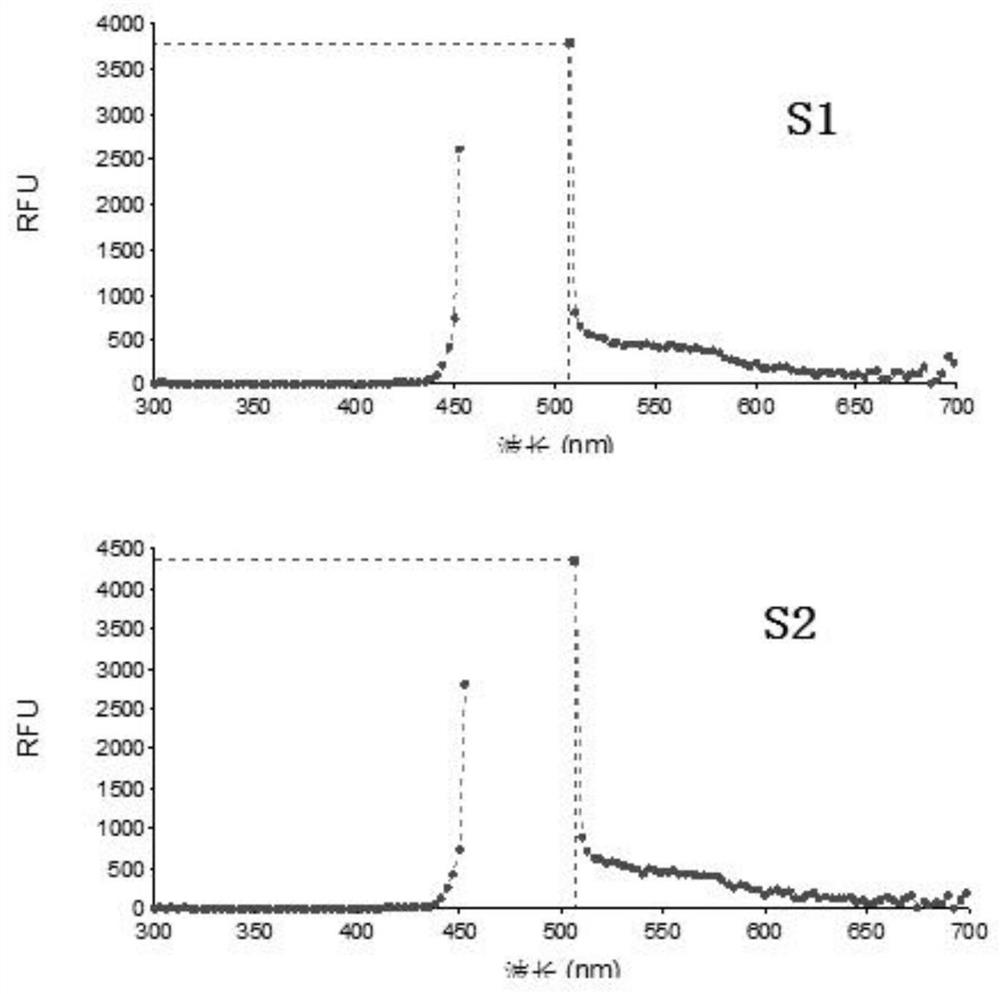Method for reducing fluorescent background of Taqman probe
A fluorescent background and probe technology, applied in the field of DNA synthesis, can solve the problem of difficult separation of Taqman probes, and achieve the effect of avoiding the existence and reducing the fluorescent background.
- Summary
- Abstract
- Description
- Claims
- Application Information
AI Technical Summary
Problems solved by technology
Method used
Image
Examples
Embodiment 1
[0023] A method for reducing the fluorescent background of Taqman probes, specifically comprising the steps of:
[0024] Step A1: Prepare the Taqman probe, the probe sequence is 5'FAM-TTGCTGCTGCTTGACAGATT-BHQ13', fill the Taqman probe into the synthesis column, put the synthesis column into the synthesis plate, add acetic anhydride and 1-methylimidazole, and block After the CPG without quenching group is added, trichloroacetic acid is added for reaction, and the protecting group DMT is removed to obtain a free 5′ hydroxyl solution;
[0025] Step A2: Mix the phosphoramidite-protected nucleotide monomer with the activator tetrazolium to prepare the nucleoside phosphorous acid activated intermediate, and perform condensation reaction between the nucleoside phosphorous acid activated intermediate and the free 5′ hydroxyl solution , add acetic anhydride and 1-methylimidazole, after terminating the reaction, add iodine, carry out oxidation reaction, make the deoxyribonucleotides be ...
Embodiment 2
[0030] A method for reducing the fluorescent background of Taqman probes, specifically comprising the steps of:
[0031] Step A1: Prepare the Taqman probe, the probe sequence is 5'FAM-TTGCTGCTGCTTGACAGATT-BHQ13', fill the Taqman probe into the synthesis column, put the synthesis column into the synthesis plate, add acetic anhydride and 1-methylimidazole, and block After the CPG without quenching group is added, trichloroacetic acid is added for reaction, and the protecting group DMT is removed to obtain a free 5′ hydroxyl solution;
[0032] Step A2: Mix the phosphoramidite-protected nucleotide monomer with the activator tetrazolium to prepare the nucleoside phosphorous acid activated intermediate, and perform condensation reaction between the nucleoside phosphorous acid activated intermediate and the free 5′ hydroxyl solution , add acetic anhydride and 1-methylimidazole, after terminating the reaction, add iodine, carry out oxidation reaction, make the deoxyribonucleotides be ...
Embodiment 3
[0037] A method for reducing the fluorescent background of Taqman probes, specifically comprising the steps of:
[0038]Step A1: Prepare the Taqman probe, the probe sequence is 5'FAM-TTGCTGCTGCTTGACAGATT-BHQ13', fill the Taqman probe into the synthesis column, put the synthesis column into the synthesis plate, add acetic anhydride and 1-methylimidazole, and block After the CPG without quenching group is added, trichloroacetic acid is added for reaction, and the protecting group DMT is removed to obtain a free 5′ hydroxyl solution;
[0039] Step A2: Mix the phosphoramidite-protected nucleotide monomer with the activator tetrazolium to prepare the nucleoside phosphorous acid activated intermediate, and perform condensation reaction between the nucleoside phosphorous acid activated intermediate and the free 5′ hydroxyl solution , add acetic anhydride and 1-methylimidazole, after terminating the reaction, add iodine, carry out oxidation reaction, make the deoxyribonucleotides be c...
PUM
 Login to View More
Login to View More Abstract
Description
Claims
Application Information
 Login to View More
Login to View More - R&D
- Intellectual Property
- Life Sciences
- Materials
- Tech Scout
- Unparalleled Data Quality
- Higher Quality Content
- 60% Fewer Hallucinations
Browse by: Latest US Patents, China's latest patents, Technical Efficacy Thesaurus, Application Domain, Technology Topic, Popular Technical Reports.
© 2025 PatSnap. All rights reserved.Legal|Privacy policy|Modern Slavery Act Transparency Statement|Sitemap|About US| Contact US: help@patsnap.com


